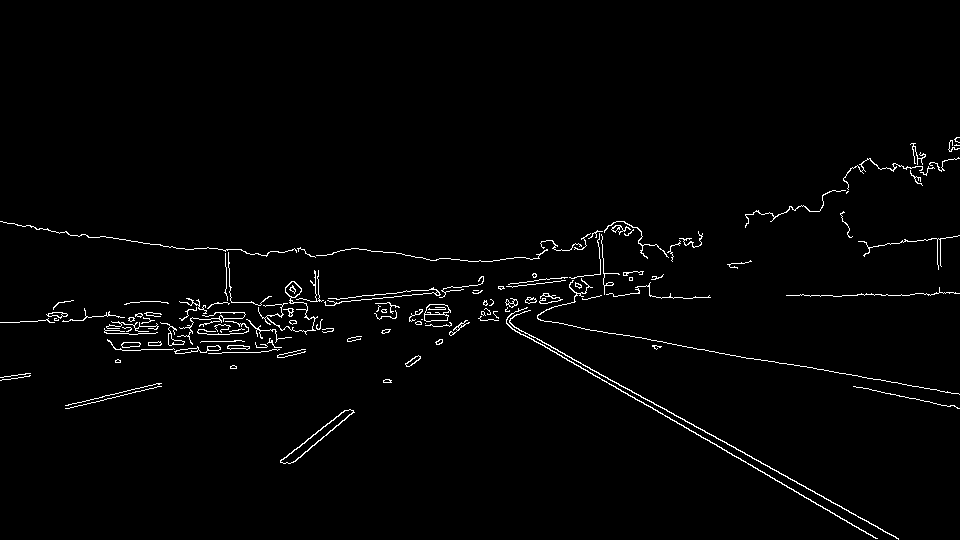Created
August 26, 2017 21:43
-
-
Save anubhavsinha/9beb379904e92d8644a0f5eb33c9e11e to your computer and use it in GitHub Desktop.
canny edge detection and gaussian blur
This file contains hidden or bidirectional Unicode text that may be interpreted or compiled differently than what appears below. To review, open the file in an editor that reveals hidden Unicode characters.
Learn more about bidirectional Unicode characters
| # Running first a gaussian blur (kernel size = 3) | |
| # and then Canny edge detection (low/high = 1:2 or 1:3) | |
| # is a handy way to get the boundaries | |
| from matplotlib import image | |
| from matplotlib import pyplot | |
| import numpy | |
| import cv2 | |
| view_from_windshield = image.imread('test.jpg') | |
| working_copy = numpy.copy(view_from_windshield) | |
| # first convert to grayscale | |
| grayscale = cv2.cvtColor(working_copy, cv2.COLOR_RGB2GRAY) | |
| #apply gaussian blur before canny edge detection | |
| kernel_size=3 | |
| gaussian_blurred = cv2.GaussianBlur(grayscale,(kernel_size, kernel_size), 0) | |
| # now apply canny edge detection threshold ratio 1:3 | |
| low_threshold = 60 | |
| high_threshold = 180 | |
| edges = cv2.Canny(gaussian_blurred, low_threshold, high_threshold) | |
| #pyplot.imshow(grayscale, cmap='gray') | |
| #pyplot.imshow(gaussian_blurred, cmap='gray') | |
| pyplot.imshow(edges, cmap='Greys_r') | |
| pyplot.show() | |
| pyplot.imsave('edges.jpg', edges, cmap='Greys_r') |
Author
anubhavsinha
commented
Aug 26, 2017

Author
After we have marked the boundaries in an image, we can identify various shapes. Hough Transform is one of such trick to identify the shapes, which we shall explore next.
Sign up for free
to join this conversation on GitHub.
Already have an account?
Sign in to comment